In line with the directives of His Highness Sheikh Mohammed bin Rashid Al Maktoum, Vice President and Prime Minister of the UAE and Ruler of Dubai, to create the world’s best public beaches in the emirate, His Highness Sheikh Hamdan bin Mohammed bin Rashid Al Maktoum, Crown Prince of Dubai and Chairman of The Executive Council of Dubai, approved the Master Plan for the Jebel Ali Beach Development Project. Extending 6.6 km, the beach is poised to become a distinctive recreational destination that places a high priority on environmental preservation and the protection of local ecosystems and wildlife.
His Highness also approved the architectural designs for the project’s buildings and facilities, which feature a unique blend of aesthetics and functionality tailored for various beach activities. The project features exceptional services, facilities, and public amenities. Offering a new eco-tourism experience, visitors to the beach can enjoy watching turtles in their natural habitat. Various measures and regulations will be put in place to protect turtles and provide them a safe nesting environment. These efforts align with the efforts of relevant bodies in the UAE to rescue, rehabilitate, and return turtles to their natural habitat and preserve the UAE’s rich marine environment.
Urban experiences
His Highness Sheikh Hamdan bin Mohammed said: “Under the directives of His Highness Sheikh Mohammed bin Rashid Al Maktoum, we are committed to developing the infrastructure and services needed to offer diverse urban experiences for citizens, residents, and visitors. Our focus is on creating spaces rich in beaches, open areas, and recreational greens. The ultimate goal is to enhance the well-being of the city’s people, create a healthy environment for all and make Dubai the world’s best place to live in.”
His Highness added: “The Jebel Ali Beach Development Project is part of a broader master plan to develop public beaches in the emirate aimed at increasing the total length of beaches by 400%. This involves adding new public beaches, enhancing existing ones, and equipping them with new recreational, sports, aesthetic, and investment facilities as envisioned in the Dubai 2040 Urban Master Plan.”
First project of its kind in the UAE
His Excellency Mattar Al Tayer, Commissioner General for Infrastructure, Urban Planning, and Well-Being Pillar, said: “An open beach for the public and a site of global environmental importance, the Jebel Ali Beach Development Project is the first of its kind in the UAE. It is located within the Jebel Ali Wildlife Sanctuary, listed under the Ramsar Convention on Wetlands of International Importance. The project aims to create a unique, attractive recreational beachfront with a strong emphasis on protecting the environment and supporting the emirate’s sustainability and eco-tourism goals. The beach’s development will ensure the preservation and enhancement of ecosystems and wildlife at the site, including enhancing turtle habitats and planting mangrove trees, which will contribute to blue carbon footprint growth and provide an open beach with minimal impact on ecological and biological systems.”
Unique ecosystem
Al Tayer added: “Jebel Ali Beach will be the longest public open beach in Dubai, stretching 6.6 km and covering an area of 330 hectares. The plan includes developing two areas: a 5 km sandy beach to be developed by Nakheel and a 1.6 km mangrove beach to be developed by Dubai Municipality. The area features a unique ecosystem due to the presence of mangrove trees, which enhance the sanctuary and provide habitats for many living organisms. The design of the area allows for optimal site utilisation, enabling the preservation of the ecosystem and enrichment of the visitor experience.
“The plan includes a 2 km open swimmable beach, a 2.5 km diving sports area, a walkway with viewing platforms to blend with the surrounding environment, and recreational and service areas for beachgoers of all ages, including kids play zones, sports and marine activity areas. The beach will be connected with integrated infrastructure, including a two-lane road in each direction, parking for 1,000 vehicles, 80 bicycle racks, a cycling track, and a 5 km running track,” said Al Tayer.
Three locations
Al Tayer said: “The beach will be divided into three locations: the Pearl (on the right side near the entrance of Palm Jebel Ali), a centre for beach and recreational activities with options for a lively family beach, sports activities, a swimming pool, kids play zones, a beach club with a pool and private beach for a fee, several restaurants, cafes, shops, and a floating restaurant in a unique location.
“The second site, named the Sanctuary, offers a haven for turtles and natural habitats. This area places the highest priority on environmental conservation and houses recreational and sports activities that enhance safe environmental exploration.
“The third site is the Nest (within the mangrove area), offering a recreational educational destination featuring a mix of educational initiatives and environmental conservation. It includes an environmental centre for studies and awareness of biodiversity, turtle rehabilitation and care programmes, and opportunities for visitors to learn about and help preserve the coastal ecosystem,” noted Al Tayer.
Architectural styles
“The architectural design of the buildings and facilities of the Jebel Ali Beach Development Project is inspired by a mix of natural geometry, drawing from shapes found in marine nature such as coral and turtle shells, as well as the Boho Syle, which uses elements and materials available locally. The buildings resemble the natural dunescape. The project offers several investment opportunities, such as restaurants, leisure centres, and commercial kiosks, to ensure maximum comfort for beachgoers and meet their various needs,” explained Al Tayer.
Al Mamzar and Jumeirah 1 Beaches
The Supreme Committee for Urban Planning and Quality of Life previously awarded contracts for the development of the Al Mamzar and Jumeirah 1 Beaches, extending 5.7 km in total (4.3 km at Al Mamzar Beach and 1.4 km at Jumeirah 1 Beach). The project involves extensive changes encapsulated in an integrated plan aimed at developing beaches and their infrastructure and transforming them into the most advanced and attractive in the world. The development will add a new recreational tourism destination catering to the increasing number of beachgoers and water sports enthusiasts in the emirate. The project will provide exceptional services for residents, tourists, and visitors alike, making it one of Dubai’s top tourism destinations.
Unique model
A unique global model for beach design, the project will enhance the overall infrastructure capacity for beachgoers, and keep pace with the emirate’s population and tourism growth. The beaches will be equipped with a range of infrastructure and advanced future facilities, including the first 24/7 night-swimmable beach in Deira, a 300-metre pedestrian path along the beaches, 11 km of cycling and jogging tracks surrounded by trees, and a 200-metre floating bridge connecting both sides of Al Mamzar Beach – the first of its kind in the emirate.
Service facilities
The beaches will be fitted with public health and service facilities, such as restrooms, shower areas, and changing rooms along the beaches, designed according to the top global practices, ensuring comfort and privacy. Additionally, the project will feature 10 areas designated for recreational and kids play zone, beach and physical sports, and barbecue areas, along with beach rest areas and spaces for seasonal events with secured entrances and exits. About 1,400 parking spaces for cars and buses, including dedicated spaces for charging eco-friendly cars, will be provided, as well as drinking water stations, irrigation networks, and sewage disposal systems extending over 5 km, along with modern automatic irrigation systems to increase green spaces.
Advanced technology
The two beaches will be equipped with advanced technology services and systems, such as advanced lockers, Wi-Fi internet services, electronic screens, beach rescue services using the latest artificial intelligence technologies, and enhanced beach monitoring through more than 100 modern cameras connected to central control rooms in Dubai Municipality and Dubai Police to ensure the highest levels of safety for beachgoers.
The plan aims to carry out 100% development of beaches, raise service levels on public beaches by 400%, and increase the length of night-swimmable beaches by 56% (equivalent to 450 metres), extend cycling tracks along the beaches by 285% (equivalent to 15.15 km), and increase the length of jogging tracks by 125% (equivalent to 11 km). Additionally, services and facilities will be provided to cater to the needs of people of determination compatible with the Dubai Code for an Accessible Environment and global best practices.
Eight beaches
Dubai currently has a total of eight public beaches: Al Mamzar Beach, Al Mamzar Corniche, Jumeirah 1, Jumeirah 2, Jumeirah 3, Umm Suqeim 1, Umm Suqeim 2, and Jebel Ali Beach. All of them have obtained the globally prestigious Blue Flag accreditation awarded to public beaches that meet its criteria including compliance with the programme’s standards such as marine water quality, environmental education, environmental management, public safety, and services for five consecutive years.
In line with the directives of His Highness Sheikh Mohammed bin Rashid Al Maktoum, Vice President and Prime Minister of the UAE and Ruler of Dubai, to create the world’s best public beaches in the emirate, His Highness Sheikh Hamdan bin Mohammed bin Rashid Al Maktoum, Crown Prince of Dubai and Chairman of The Executive Council of Dubai, approved the Master Plan for the Jebel Ali Beach Development Project. Extending 6.6 km, the beach is poised to become a distinctive recreational destination that places a high priority on environmental preservation and the protection of local ecosystems and wildlife.
His Highness also approved the architectural designs for the project’s buildings and facilities, which feature a unique blend of aesthetics and functionality tailored for various beach activities. The project features exceptional services, facilities, and public amenities. Offering a new eco-tourism experience, visitors to the beach can enjoy watching turtles in their natural habitat. Various measures and regulations will be put in place to protect them and provide them a safe nesting environment. These efforts align with the efforts of relevant bodies in the UAE to rescue, rehabilitate, and return turtles to their natural habitat and preserve the UAE’s rich marine environment.
Urban experiences
His Highness Sheikh Hamdan bin Mohammed bin Rashid Al Maktoum said: “Under the directives of His Highness Sheikh Mohammed bin Rashid Al Maktoum, we are committed to developing the infrastructure and services needed to offer diverse urban experiences for citizens, residents, and visitors. Our focus is on creating spaces rich in beaches, open areas, and recreational greens. The ultimate goal is to enhance the well-being of the city’s people, create a healthy environment for all and make Dubai the world’s best place to live in.”
His Highness added: “The Jebel Ali Beach Development Project is part of a broader master plan to develop public beaches in the emirate aimed at increasing the total length of beaches by 400%. This involves adding new public beaches and enhancing existing ones, and equipping them with new recreational, sports, aesthetic, and investment facilities as envisioned in the Dubai 2040 Urban Master Plan.”
First project of its kind in the UAE
His Excellency Mattar Al Tayer, Commissioner General for Infrastructure, Urban Planning, and Well-Being Pillar, said: “An open beach for the public and a site of global environmental importance, the Jebel Ali Beach Development Project is the first of its kind in the UAE. It is located within the Jebel Ali Wildlife Sanctuary, listed under the Ramsar Convention on Wetlands of International Importance. The project aims to create a unique, attractive recreational beachfront with a strong emphasis on protecting the environment and supporting the emirate’s sustainability and eco-tourism goals. The beach’s development will ensure the preservation and enhancement of ecosystems and wildlife at the site, including enhancing turtle habitats and planting mangrove trees, which will contribute to blue carbon footprint growth and provide an open beach with minimal impact on ecological and biological systems.”
Unique ecosystem
Al Tayer added: “Jebel Ali Beach will be the longest public open beach in Dubai, stretching 6.6 km and covering an area of 330 hectares. The plan includes developing two areas: a 5 km sandy beach to be developed by Nakheel and a 1.6 km mangrove beach to be developed by Dubai Municipality. This area features a unique ecosystem due to the role of mangrove trees in enhancing the ecosystem within the sanctuary and providing habitats for many living organisms. The design of this area allows for optimal site utilisation, enabling the preservation of the ecosystem and enrichment of the visitor experience.
“The plan includes a 2 km open swimmable beach, a 2.5 km diving sports area, a walkway with viewing platforms to blend with the surrounding environment, and recreational and service areas for beachgoers of all ages, including kids play zones, sports and marine activity areas. The beach will be connected with integrated infrastructure, including a two-lane road in each direction, parking for 1,000 vehicles, 80 bicycle racks, a cycling track, and a 5 km running track,” commented Al Tayer.
Three locations
Al Tayer said: “The beach will be divided into three locations: the Pearl (on the right side near the entrance of Palm Jebel Ali), a centre for beach and recreational activities with options for a lively family beach, sports activities, a swimming pool, kids play zones, a beach club with a pool and private beach for a fee, several restaurants, cafes, shops, and a floating restaurant in a unique location.
“The second site, named the Sanctuary, offers a haven for turtles and natural habitats. This area places the highest priority on environmental conservation, housing recreational and sports activities that enhance safe environmental exploration.
“The third site is the Nest (within the mangrove area), offering a recreational educational destination featuring a mix of educational initiatives and environmental conservation. It includes an environmental centre for studies and awareness of biodiversity, turtle rehabilitation and care programmes, and opportunities for visitors to learn about and help preserve the coastal ecosystem,” noted Al Tayer.
Architectural styles
“The architectural design of the buildings and facilities of the Jebel Ali Beach Development Project is inspired by a mix of natural geometry, drawing from shapes found in marine nature such as coral and turtle shells, as well as the Boho Syle, which uses elements and materials available locally. The buildings resemble the natural dunescape. The project offers several investment opportunities, such as restaurants, leisure centres, and commercial kiosks, to ensure maximum comfort for beachgoers and meet their various needs,” explained Al Tayer.
Al Mamzar and Jumeirah 1 Beaches
The Supreme Committee for Urban Planning and Quality of Life previously awarded contracts for the development of Al Mamzar and Jumeirah 1 Beaches, extending 5.7 km in total (4.3 km at Al Mamzar Beach and 1.4 km at Jumeirah 1 Beach). The project involves extensive changes encapsulated in an integrated plan aimed at developing beaches and their infrastructure and transforming them into the most advanced and attractive in the world. The development will add a new recreational tourism destination catering to the increasing number of beachgoers and water sports enthusiasts in the emirate. The project will provide exceptional services for residents, tourists, and visitors alike on Dubai’s beaches, making it one of its top tourist destinations.
Unique model
A unique global model in beach design, the project will enhance the overall infrastructure capacity for beachgoers, and keep pace with the emirate’s population and tourism growth. The beaches will be equipped with a range of infrastructure and advanced future facilities, including the first 24/7 night-swimmable beach in Deira, a 300-metre pedestrian path along the beaches, 11 km of cycling and jogging tracks surrounded by trees, and a 200-metre floating bridge connecting both sides of Al Mamzar Beach – the first of its kind in the emirate.
Service facilities
The beaches will be fitted with public health and service facilities, such as restrooms, shower areas, and changing rooms along the beaches, designed according to the top global practices, ensuring comfort and privacy. Additionally, the project will feature 10 areas designated for recreational and kids play zone, beach and physical sports, and barbecue areas, along with beach rest areas and spaces for seasonal events with secured entrances and exits. About 1,400 parking spaces for cars and buses, including dedicated spaces for charging eco-friendly cars, will be provided, as well as drinking water stations, irrigation networks, and sewage disposal systems extending over 5 km, along with modern automatic irrigation systems to increase green spaces.
Advanced technology
The two beaches will be equipped with advanced technology services and systems, such as advanced lockers, Wi-Fi internet services, electronic screens, beach rescue services using the latest artificial intelligence technologies, and enhanced beach monitoring through more than 100 modern cameras connected to central control rooms in Dubai Municipality and Dubai Police to ensure the highest levels of safety for beachgoers.
The plan aims to carry out 100% development of beaches, raise service levels on public beaches by 400%, and increase the length of night-swimmable beaches by 56% (equivalent to 450 metres), extend cycling tracks along the beaches by 285% (equivalent to 15.15 km), and increase the length of jogging tracks by 125% (equivalent to 11 km). Additionally, services and facilities will be provided to cater to the needs of people of determination compatible with the Dubai Code for an Accessible Environment and global best practices.
Eight beaches
Dubai currently has a total eight public beaches: Al Mamzar Beach, Al Mamzar Corniche, Jumeirah 1, Jumeirah 2, Jumeirah 3, Umm Suqeim 1, Umm Suqeim 2, and Jebel Ali Beach. All of them have obtained the globally prestigious Blue Flag accreditation provided to public beaches that meet its criteria including compliance with the programme’s standards such as marine water quality, environmental education, environmental management, public safety, and services for five consecutive years.
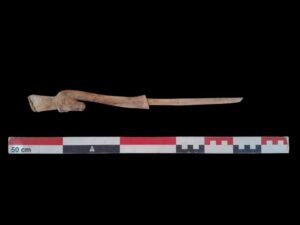

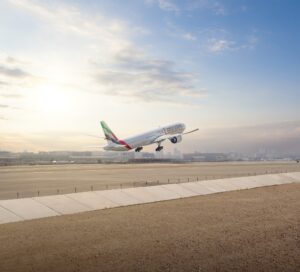


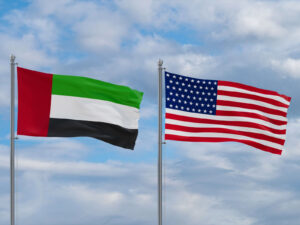
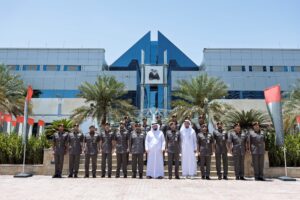


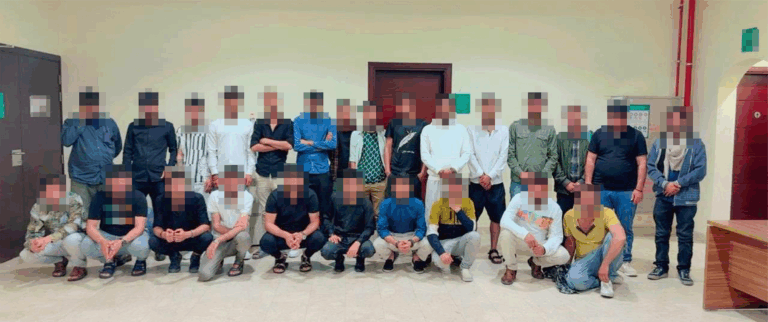



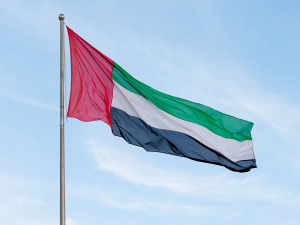

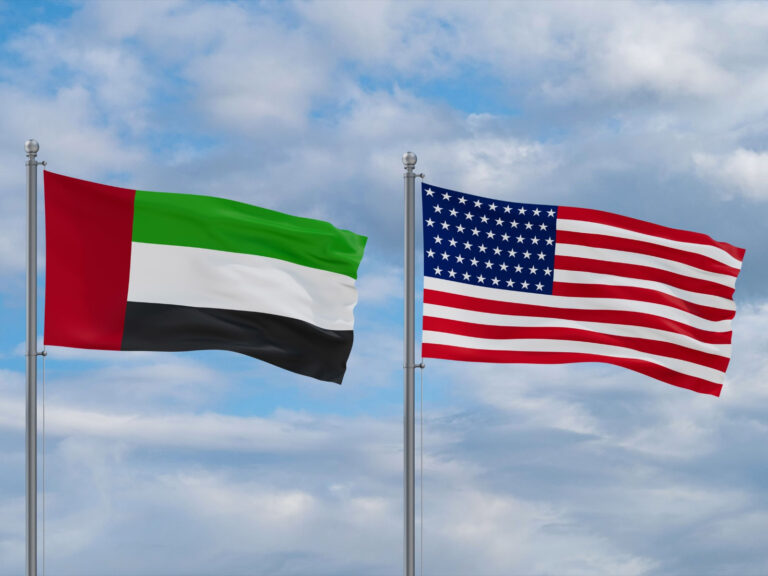

+ There are no comments
Add yours